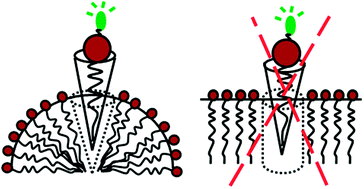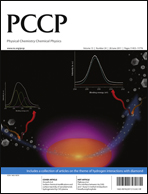In this paper we have investigated the behaviour of newly synthesised mono-palmitoyl- and dipalmitoyl-phosphatidylethanolamine probes (abbreviated as mPE and dPE, respectively) labelled in the polar headgroup region by either the FL-BODIPY or the 564/570-BODIPY fluorophore and solubilised in lipid systems that exhibit different curvatures. Because of the bulky BODIPY-groups, the monoacyl-form derivatives have a conic-like shape, whereas that for the diacyl derivatives is rather cylindrical. A careful analysis of time-resolved resonance energy transfer experiments by means of analytical models as well as Monte Carlo simulations shows that the mPE derivatives have a comparable affinity to highly curved bilayer regions (torroidal pores formed by magainin-2 in lipid bilayers, or the rims of discoid bicelles) and to planar bilayer regions (i.e. the flat region of lipid bilayers and bicelles). Furthermore, the monoacyl-probes are as compared to the diacyl-probes effectively closer to each other in a lipid bilayer, while none of these probes seems to be randomly distributed. Self-aggregation is most efficiently induced by the larger aromatic 564/570-BODIPY chromophore, but it is suppressed when using the diacyl instead of the monoacyl-form, and/or by attaching BODIPY-groups to the acyl-chain.

You have access to this article
 Please wait while we load your content...
Something went wrong. Try again?
Please wait while we load your content...
Something went wrong. Try again?


 Please wait while we load your content...
Please wait while we load your content...